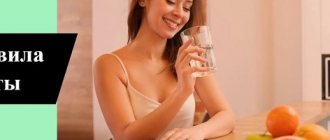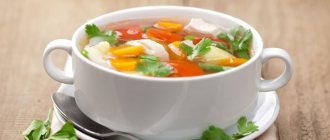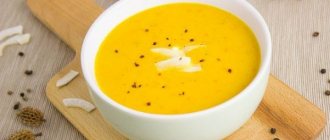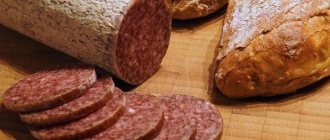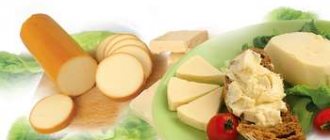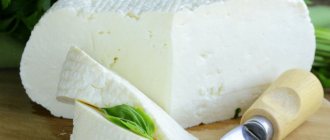Enough! You no longer need to cook for yourself separately and count every calorie. The cheese diet is simple, tasty and very effective. Find out how to choose cheese for weight loss and lose 1 kg per day!
Author: Kristina Lobanovskaya, doctor, practicing nutritionist Article updated: 11/10/2020
Of all the variety of existing weight loss techniques, there are some that can be enjoyable. To do this, they should be based on your favorite products, so that even a limited menu is not a burden. Since cheese is usually contraindicated in a diet, its fans are ideally suited to one of the special weight loss systems, which does not exclude, but, on the contrary, recommends eating this valuable protein product. But the main thing is that the cheese diet is very effective for normalizing body weight and at the same time not leaving you hungry.
Useful properties of cheese
Cheeses are a product of milk processing and are considered healthy foods. They are characterized by a high protein content (up to 25%), which is absorbed better than milk, as well as a large amount of nutrients that have a beneficial effect on the digestive system and the body as a whole. All vitamins contained in them (A, C, D, E, PP, group B), amino acids, minerals, micro- and macroelements are almost completely (99%) preserved during digestion in the gastrointestinal tract and penetrate into the blood.
Regular consumption of cheeses allows you to:
- improve the functioning of the gastrointestinal tract;
- speed up metabolism;
- improve the condition of the skin, hair and nails;
- restore vision.
Such products are especially useful for women over 40 years old, as they are a rich source of calcium and phosphorus, necessary for strengthening bones.
The calorie content of each type of cheese varies significantly depending on the amount of fat and protein. Since during a diet it is recommended to reduce the energy value of the diet, a low-fat product is usually chosen for weight loss. Based on the content of proteins, minerals and other useful substances that are in the optimal ratio, it can be called milk concentrate.
Diet: eggs and cheese
The duration of the egg-cheese diet is one week. As you know, cheese does not contain carbohydrates, which our body consumes when performing any work and during any physiological processes, which leads to the consumption of subcutaneous fat in the shortest possible time. On this diet, you need to eat little and often - about 5-6 times a day. You can repeat the cheese table no earlier than after three months to avoid harm to metabolism. Drinking plenty of fluids is a must for this diet. Be sure to drink one and a half liters of water a day (any other drinks do not count).
- Morning: coffee without sugar (you can add a teaspoon of cream).
- Lunch: one hard-boiled egg.
- Lunch: 200 g chicken, 50 g cheese, coffee without sugar and cream.
- Afternoon snack: 100 g cottage cheese/50 g cheese.
- Dinner: 1 egg and low-fat kefir up to 1 liter.
And remember that the goal of any diet is to improve the condition of the body. If the diet is harmful to your health in any way, it must be stopped immediately. Be happy and healthy!
Cheese on a diet
The main question that worries everyone who is losing weight is whether it is possible to eat cheese on a diet and, if so, which one is better to choose and how much cheese you can eat per day. Most nutritionists claim that during a diet, this product can become an optimal source of protein, without which normal weight loss cannot occur. Protein deficiency leads to the fact that instead of fat deposits, muscle tissue begins to break down, and this is fraught with many negative consequences for the body. After all, high-quality muscles are not only beautiful, sculpted muscles, but also good heart function, reliable support for the spine, and the normal condition of all other internal organs.
In most cases, doubts about whether cheese can be eaten while losing weight are associated with its high energy value. However, it should be borne in mind that in this case the calorie content depends on the amount of fat, which is neither plant nor traditional animal fat. This is a special milk fat, thanks to the characteristics of which cheese weight loss techniques are highly effective.
The beneficial properties of milk fat include the following:
- It contains conjugated linoleic acid, an essential fatty acid that forces the body to extract energy from fat stores. With the simultaneous consumption of linoleic acid and calcium, present in large quantities in cheese products, this process is significantly accelerated.
- It is completely absorbed by the body and, unlike other types of lipids, is not deposited in subcutaneous adipose tissue.
Therefore, even if you consume fatty cheeses during the period of weight loss, the kilocalories obtained from them will be consumed completely, without deposition, and at the same time contribute to the burning of existing deposits. In addition, all such products contain probiotics, which have a number of positive effects on the functioning of the gastrointestinal tract:
- normalize intestinal microflora;
- neutralize toxins;
- localize and eliminate inflammatory processes.
Thanks to this effect, gastroenterologists recommend consuming cheeses in small quantities in the presence of colitis, diarrhea and other gastrointestinal disorders.
A slice weighing 30 g is quite enough to satisfy hunger, and its energy value will be no more than 135 kcal, even if you take the variety with the highest calorie content. Therefore, when choosing what kind of cheese to eat on a diet, you can be guided by your own taste preferences, and not by the fat content. Even with a strictly limited caloric content of the daily menu for weight loss, you can consume such an amount of one or another variety that will meet the requirements of the dietary diet, and not exclude cheeses from your diet completely.
But the best solution for lovers of such products would be a cheese diet. In it, nutritionists have already calculated the permissible rate of its consumption, and also selected the remaining components of the diet that will make the diet as healthy as possible for rapid weight loss.
Berlin diet with eggs and sausages
This diet program lasts ten days and has long been recognized as one of the most delicious, especially for junk food lovers. Unlike most diets, this one allows you to consume cane sugar.
- Breakfast: bread; 2 eggs; tea or coffee.
- Lunch: three sausages; one hard-boiled egg.
- Dinner: 100 g boiled sausage; tea with a bun without filler.
Features of the cheese diet
There are several options for the diet in question, each of which is a type of protein weight loss method with a similar principle of action. When you exclude carbohydrates from your diet, your own fat reserves begin to be used as energy sources, which ensures rapid weight loss. Cheese diets in combination with moderate physical activity are most effective.
The duration of the cheese diet should not exceed 7 days, since the lack of carbohydrates in the diet can negatively affect your health. If well tolerated, without negative reactions in the form of indigestion, it is allowed to extend the weight loss process up to 10 days.
Weight loss during this period is quite rapid and usually amounts to 1 kg per day. Thus, in one course you can lose up to 7–10 extra pounds. It is recommended to repeat the cheese diet no more than 2 times a year.
The rules for such weight loss are quite simple:
- eat 6-7 times a day in small portions;
- maintain a drinking regime - drink at least 2 liters of water per day;
- strictly follow the selected menu option.
It is recommended to avoid late dinners. Ideally, you should stop eating 4 hours before bedtime.
It is best to use this power system in the summer. The heat makes meat difficult to digest, and cheeses can be an ideal alternative source of protein. It is better to consume them with vegetables, then the effectiveness of weight loss will be maximum.
Which cheeses are not suitable for the diet?
Products with a high fat content, i.e. above 40% (Gouda 45%, Emmental 45%, feta cheese, cheddar, Parmesan, blue cheeses such as Hermelin, Roquefort, etc.) are not suitable for a cheese diet. It is better to replace them with other, less fatty cheeses. Sometimes you can find a lighter version of these products, for example, with mozzarella with a reduced percentage of fat, Camembert with 30% fat in dry matter.
List of cheeses, their energy and nutritional value:
| Cheese name | Kcal | Fats (g/100g) | Protein (g/100g) | Carbohydrates (g/100g) |
| Balkan | 233 | 20,0 | 11,8 | 1,0 |
| Cheese cheese 40% | 252 | 17,6 | 19,8 | 1,7 |
| Cheese cheese 50% | 306 | 25,0 | 19,9 | 1,6 |
| Camembert 30% | 220 | 12,8 | 22,8 | 0,0 |
| Camembert 45% | 291 | 21,8 | 21,0 | 0,0 |
| Camembert 48% | 405 | 28,5 | 21,0 | 1,5 |
| Chedar 50% | 396 | 30,0 | 25,3 | 2,9 |
| Cottage 10% | 85 | 2,5 | 12,5 | 2,5 |
| Cottage 20% | 98 | 4,2 | 13,5 | 1,0 |
| Edam 20% | 220 | 10,0 | 30,0 | 3,0 |
| Edam 30% | 263 | 14,0 | 30,3 | 1,4 |
| Edam 45% | 329 | 24,5 | 24,2 | 0,9 |
| Edam 50% | 347 | 26,1 | 26,0 | 1,0 |
| Emmental 45% | 386 | 28,4 | 28,2 | 2,3 |
| Gouda 30% | 257 | 15,1 | 28,6 | 1,9 |
| Hermelin | 262 | 19,0 | 19,2 | 0,9 |
| Hermelin 45% | 276 | 20,2 | 20,2 | 1,6 |
| Cottage cheese | 290 | 27,0 | 11,0 | 1,0 |
| Mascarpone | 450 | 17,5 | 4,5 | 3,5 |
| Sheep cheese | 365 | 29,5 | 23,1 | 0,0 |
| Permesan | 459 | 32,7 | 39,4 | 0,0 |
| Parmesan 25% | 383 | 28,0 | 33,0 | 0,0 |
| Romadur 20% | 175 | 8,3 | 13,6 | 2,5 |
| Romadur 40% | 243 | 17,2 | 18,1 | 2,4 |
| Fused emmental | 307 | 23,4 | 21,2 | 1,2 |
| Processed cheeses 30%–40% | 191 | 11,4 | 19,6 | 0,8 |
| Processed cheeses 40%–50% | 236 | 18,0 | 15,9 | 1,2 |
| Processed cheeses 50%–60% | 290 | 26,0 | 12,1 | 1,0 |
| Processed cheeses 60%–70% | 379 | 35,0 | 12,1 | 1,0 |
| Tofu | 56 | 3,0 | 11,0 | 1,5 |
Advantages and disadvantages
All cheese diets have several important advantages:
- Fairly easy to follow, since they are not accompanied by a strong feeling of hunger.
- Simplicity, unpretentiousness, no need to prepare special dishes or count calories consumed.
Also, consuming a relatively large amount of cheese products allows you to get all the benefits described above.
At the same time, the possible harm of this method of losing weight :
- The absence of carbohydrates negatively affects the body’s condition, including worsening the breakdown of lipids and leading to intoxication with the remnants of their incomplete breakdown.
- Excess protein increases the risk of developing some serious diseases of the kidneys, liver, joints and tissues caused by metabolic disorders.
To eliminate the harmful effects of a cheese diet on health, you must strictly adhere to the rules, not exceed its duration and follow the recommended menu.
Diet based on fish and eggs
Eggs in this diet are consumed little by little; the basis of the diet is lean fish (tuna, saury, pollock, mackerel, flounder), rich in phosphorus and microelements. You can wash down your meal with coffee or green tea without sugar. You can't drink black tea, just like too strong green tea. The duration of the diet is 1 week. If desired, you can extend the period up to two weeks without harm to health; after 14 days of following the diet, you must take a break before the next repetition.
The effectiveness of the diet is ensured by a clear calculation of the number of calories you consume per day. Do not exceed 1,400 Kcal.
- Breakfast: a handful of any nuts, poured with a teaspoon of honey; 150 g fish; 1-2 thin slices of black bread; 1 egg (can be fried without oil).
- Lunch: Lenten first course; fish cutlets/fried egg whites (you can make an omelette with one yolk).
- Dinner: 100 g boiled squid or mussels; 2 hard-boiled eggs; 200 g vegetable salad/100 g fruit salad.
Menu options
When creating a menu, it is recommended to use varieties that are not too salty, not too fatty and not spicy. Fat content of 10–12% is considered optimal. You can eat only 1 type of cheese or several, according to your taste, unless otherwise specified in the rules for preparing the diet.
Fasting days
It is recommended to start using the cheese diet with fasting days, arranged once a week. There are many options for such days. For example, it is recommended to use the following options:
Option 1:
- breakfast – 2 apples, 30 g mozzarella;
- lunch – 70 g Adyghe;
- lunch – 100 g Russian, 1 apple;
- dinner – 1 apple.
Option 2:
- the daily diet consists of 300 g of cottage cheese with 0% fat content and 150 g of any cheese product, which must be divided into equal portions and eaten during the day in 5-6 meals;
- You can drink herbal infusions (from linden, chamomile, mint) and clean water.
Option 3:
- 5 times a day – 70 g of any cheese product with 1 whole grain bread and 50 g of dry wine;
- between meals – 300 ml of pure water or green tea.
Any of these options for a fasting day allows you to lose an average of 1 kg of excess weight.
For 3 days
A cheese diet for 3 days is tolerated by the body without stress or negative consequences. But due to the limited menu it is quite tough.
The first day:
- in the morning – 2 baked apples with nuts;
- for lunch – 30 g of unsalted cheese;
- in the afternoon – 2 baked apples with nuts and 1 tsp. honey;
- snack – 30 g ricotta;
- in the evening – 2 baked apples.
Second:
- in the morning – 2 fresh apples;
- for lunch – 100 g of mozzarella;
- in the afternoon - cabbage salad with 20 g of grain cottage cheese;
- snack – 2 eggs, 30 g feta;
- in the evening – 2 baked apples.
Third:
- in the morning – 50 g of ricotta;
- for lunch – 2 fresh apples, 30 g Dutch;
- in the afternoon - a salad of green vegetables with 30 g of granular cottage cheese;
- snack – 30 g mozzarella;
- in the evening - 1 apple, a slice (10 g) of Dutch.
Every day before each meal (20 minutes) you should drink a glass of warm water to speed up metabolic processes and the breakdown of fat deposits. If you feel a strong feeling of hunger, you can drink 200 ml of kefir or yogurt.
For 1 week
With this diet option, you need to eat according to the following scheme:
The first day:
- in the morning – 2 fresh apples;
- for lunch – 100 g of mozzarella;
- in the afternoon - cabbage salad with 20 g of grated feta;
- snack – 2 eggs, 30 g Russian (low fat);
- in the evening - 2 baked apples, 1 slice of Russian.
Second:
- in the morning – 50 g of ricotta;
- for lunch – 2 fresh apples;
- in the afternoon - a salad of green vegetables with 30 g of granular cottage cheese;
- snack – 30 g ricotta;
- in the evening – 1 apple, 1 slice of Dutch.
Third:
- in the morning – 2 baked apples with nuts;
- for lunch – 30 g of unsalted cheese;
- in the afternoon – 2 baked apples with nuts and 1 tsp. honey;
- snack – 30 g mozzarella;
- in the evening - 2 baked apples, 1 slice of Russian.
Fourth:
- in the morning – 1 hard-boiled egg, 30 g Dutch;
- for lunch – 30 g feta cheese, 1–2 tomatoes;
- in the afternoon – 150 ml of cream cheese soup with broccoli;
- snack – 200 g of vegetable salad with 30 g of grain cottage cheese;
- in the evening - 100 g of lentil puree, 20 g of mozzarella.
Fifth:
- in the morning – 2 tomatoes, 30 g Dutch;
- for lunch – 100 g of granular cottage cheese;
- in the afternoon – 150 g chicken breast, 2 cucumbers, 30 g mozzarella;
- snack – 200 ml pumpkin smoothie with yogurt;
- in the evening - 150 g of stewed vegetables, 30 g of ricotta.
Sixth:
- in the morning - tomato salad with Adyghe cubes (20 g);
- for lunch – 200 ml of kefir;
- in the afternoon – 200 ml of cheese soup, 150 g of boiled fish;
- snack – 2 apples;
- in the evening - 200 g of carrot salad with 25 g of grated cheese.
Seventh:
- in the morning – 150 g of pea puree, 30 g of Dutch;
- for lunch – 30 g of nuts without additives;
- in the afternoon – 100 g grilled veal, potatoes (2 pcs.), 30 g feta cheese;
- snack – 200 ml yogurt, 1 egg;
- in the evening - 2 tomatoes, 30 g feta.
You can satisfy a strong feeling of hunger with cabbage salad with lemon juice or low-fat kefir.
"10 cheeses"
This menu may include only one variety or several (optional), but not necessarily 10 different ones, as you can guess from the name. “10 cheeses” means that within 10 days, eating mainly cheese, you can lose 10 kg of weight. You are allowed to use only hard ones - Dutch, Russian, Cheddar and others, alternating them to your taste.
For each meal you should consume 30 g of cheese of the above varieties, as well as additionally the following products:
First day:
- 8:00 – 200 ml of milk;
- 10:00 – cucumbers, greens;
- 13:00 – 4 tomatoes;
- 16:00 – 1 egg;
- 18:00 – 100 g of boiled chicken breast.
Second:
- 8:00 – baked potatoes (2 pcs.);
- 10:00 – 200 ml kefir;
- 13:00 – 150 g of cabbage salad;
- 16:00 – 200 ml of milk;
- 18:00 – 200 g of boiled carrot salad.
Third:
- 8:00 – 150 g of pea puree;
- 10:00 – 200 ml of yogurt;
- 13:00 – 200 g of boiled asparagus;
- 16:00 – cucumbers, greens;
- 18:00 – 100 g bean puree.
Fourth:
- 8:00 – 200 ml of milk;
- 10:00 – 2–3 bell peppers;
- 13:00 – 150 g boiled broccoli;
- 16:00 – lettuce salad;
- 18:00 – 100 g of boiled red meat.
Fifth:
- 8:00 – 2 tomatoes, greens;
- 10:00 – 200 ml kefir;
- 13:00 – 200 g eggplants stewed with garlic;
- 16:00 – cucumbers, greens;
- 18:00 – 150 g steamed fish, 50 g celery.
After 5 days on a diet, you should take a break from proper nutrition (1-2 days) to consolidate the results. Then you need to repeat all the days in the same order.
During the entire course you can drink any sugar-free drinks. The total daily volume of liquid should not exceed 1 liter, since the menu includes a large number of vegetables containing water.
On sandwiches with cheese
The main point of losing weight on cheese sandwiches is that only this dish is included in the menu, but the daily caloric content of the diet should not exceed 1200 Kcal. When making sandwiches you must follow these rules:
- The basis should be bread, whole grain or bran bread in a total amount of no more than 500 g per day.
- Cheeses are cut into thin slices, their daily intake is determined in accordance with calorie content: low-calorie ones can be taken more, fatty ones - less.
- As a supplement, it is allowed to use cucumbers, tomatoes, herbs, and lettuce.
- The maximum weight of one sandwich is 15 g.
There is no menu as such for this cheese diet. You just need to eat 1 sandwich every hour. Women are allowed to eat 12 sandwiches per day, men - 16. In between, you can drink clean water or green tea. The duration of the course is no more than 10 days.
Wine and cheese
This menu is also quite simple. In 1 day you are allowed to consume:
- 350 g of cheese products;
- 350 ml dry red wine;
- 7 loaves of bread.
The specified amount is divided into 7 servings and consumed at regular intervals. You can stick to this diet for no more than 3 days.
Low calorie recipes
Cheese is a food product suitable for preparing a variety of soups and salads. To do this, you can use the following recipes:
Dietary cheese soup with broccoli
One of the important moments is to choose fresh and tasty cabbage at the market or in the supermarket. To do this, you should pay attention to the broccoli inflorescences - they should be small and closed, and the stem should be elastic.
Ingredients:
- small carrots - 1 pc.;
- broccoli - 80 g;
- onion - half a head;
- hard cheese with a fat content of no more than 12% - 30 g;
- lean meat broth - 150 ml;
- greens (parsley, dill).
Preparation:
- Prepare the broth for 40-60 minutes using purified water and any lean meat - veal, rabbit, skinless chicken breast, pork tenderloin.
- We remove the meat, and add broccoli to the amount of broth we need, after tearing this vegetable into small inflorescences, and peeled carrots, cut into cubes.
- Cook them for 15 minutes, but no longer.
- Next, add chopped onions.
- After 5 minutes of boiling, add the grated cheese, stir and turn off the heat.
- Serve this delicious low-calorie dish after sprinkling it with herbs on top.
The recipe is presented in the video:
Dietary cheese soup with chicken
This version of the soup does not contain meat broth, but it is quite filling due to the use of boiled chicken breast.
Ingredients:
- purified water - 400 ml;
- carrots - 1 root vegetable;
- champignons - 2 pcs.;
- vegetable oil;
- onion - 1 pc.;
- boiled chicken breast - 120 g;
- cheese - 100 g;
- greens - half a bunch.
Preparation:
- Place a pot of purified water to boil.
- We peel the carrots from the inedible skin and, cutting them into cubes, send this chopped vegetable to cook.
- After peeling the onions, cut them into half rings and place them in a frying pan with vegetable oil. We also send champignon plates here. Fry briefly - about 5-7 minutes.
- When the carrot cubes have boiled for about 10 minutes, add the fried champignons and onions into the liquid and after 2 minutes turn off the heat.
- We turn this mass into a homogeneous puree. Immediately you need to add a little grated cheese and boiled meat disassembled into fibers into the puree soup.
- Mix it and decorate the top with herbs torn by hand or cut with kitchen scissors.
You cannot eat this entire amount at once - you should divide it into 3 servings. As you know, there is no need to overeat, otherwise the result will not be expected.
Under no circumstances should we add butter, cream or sour cream to any of these dishes. We also do not use potatoes; if desired, you can supplement the dietary soup with low-calorie vegetables such as zucchini and tomatoes. Another important point: cheese is a fairly salty product, so adding salt is excluded.
Contraindications
The cheese diet, as a type of protein and low-carbohydrate weight loss methods, has a number of contraindications. It cannot be followed if you have the following diseases:
- heart, kidney or liver failure;
- metabolic disease;
- digestive system disorders, chronic constipation.
Also, such weight loss techniques are contraindicated if you are allergic to milk or individual lactose intolerant. In all other cases, strict adherence to the recommended duration and nutritional rules is required. This will help avoid adverse reactions and harm to health.
How the diet works
Protein nutrition based on cheese supplies the body with a sufficient amount of protein, limiting the amount of carbohydrates. Thus, the energy deficit that the latter provided previously is replenished by other body reserves that have fat reserves. This principle is used on the Dukan diet in the Attack phase.
Cheese contains lecithin, which affects fat metabolism. This component is part of the structure of the cell membrane and is responsible for its permeability, therefore it is very important in human nutrition. In addition, lecithin normalizes cholesterol levels in the blood and promotes the rapid breakdown of fats.
By eating a slice of cheese at night, you can regulate and improve your sleep, eliminating the problem of falling asleep.
The benefits of cheese nutrition
- Cheeses contain a large amount of vitamins and minerals necessary for the body.
- This product is easily digestible.
- The cheese menu diet is quite effective.
- The dishes are already ready to eat and you don’t have to spend a lot of time in the kitchen.
- The principle of the technique is similar to fractional meals, and this allows you to stay full for a long time.
Disadvantages of the cheese method
The main disadvantages of the system include:
- imbalance;
- the influence of dairy products on the activity of the gastrointestinal tract;
- impact on the functioning of the liver and kidneys (with prolonged adherence to the diet).
You need to come out of such a diet slowly, without sudden disruptions. For several days after the diet, introduce bread, fruits, and vegetables into your diet. Remember to drink enough water to prevent dehydration.
When you go out, maintain the principles of fractional meals, which will make it easier for your stomach to adapt to everyday food. And exercise and skincare treatments will help eliminate cosmetic imperfections after losing weight, such as sagging skin or stretch marks.
Contraindications to the diet
A number of contraindications include the following:
- diseases of the gastrointestinal tract;
- high pressure;
- heart and vascular diseases;
- liver failure;
- diabetes;
- pregnancy and lactation;
- metabolic disorders;
- chronic constipation;
- allergy to milk protein.
Cheese on a diet is not suitable for every woman losing weight, as it affects the digestion process. It contains milk protein, which is contraindicated for most allergy sufferers. The taste of this product is not pleasant to everyone, so cheese nutrition is an individual choice.
If you have a medical condition, consult your doctor before choosing a method. It may be worth setting limits on the duration of your cheese diet.
Quitting the diet
At the end of the cheese diet, you can’t pounce on your usual food, otherwise all the lost kilograms will come back. Every day you need to add a small amount of carbohydrates to your diet, gradually increasing their amount, to allow the digestive system to return to normal operation. At the same time, it is important to provide not only a low-calorie, but also a healthy diet in order to prevent problems with the functioning of the gastrointestinal tract.
First of all, you should include healthy dishes in the menu:
- low-fat meat and fish broths;
- light soups;
- porridge with water or milk;
- fruit purees.
Such food will help normalize digestion and maintain the results achieved in losing weight.
It is also recommended to continue to eat smaller meals for 2 weeks, avoid late dinners, and drink at least 1.5 liters of water per day.
Basic Rules
Having decided to go on a cheese diet, first of all, you need to familiarize yourself with the following important points and requirements of such a highly effective weight loss program:
- You should choose low-calorie varieties of cheese. The latter include mozzarella, feta cheese and ricotta. You can diversify your diet with hard cheeses, the main thing is that their fat content does not exceed 12%. You can also include blue cheeses in the menu, but you should reduce their dosage by 10-15%.
- It is welcome if breakfast is at 8 o'clock in the morning. The next meals should be taken after 2-2.5 hours, that is, in total there will be at least 5-6. The last meal is 2-3 hours before bedtime. It is fractional meals that provide the opportunity not to feel hungry and remain energetic.
- Compliance with the drinking regime is mandatory. Every day you need to drink at least 1.5-2 liters of clean water. In addition to it, green tea and dry red wine are allowed for consumption (you can drink no more than 50 ml at a time).
- Since the intake of carbohydrates is minimal, strenuous physical activity is prohibited. It is enough to take a walk periodically; it is acceptable to do yoga.
- As for exiting the cheese diet, it should be gradual. This will allow the body to function normally without failures, which will ensure a person’s normal functioning. It’s good if, thanks to such a nutrition system, you train yourself to organize 3 main meals and a couple of snacks every day. This is a guarantee that the excess weight lost will not return.
The cheese diet is contraindicated for people suffering from heart, kidney and digestive system diseases, chronic constipation, and those who have allergic reactions after consuming dairy products. This weight loss system is not suitable for those with metabolic disorders, pregnant or breastfeeding women.
Types of cheeses for diet
Modern manufacturers offer more than 400 types of cheese products, which differ in their composition, manufacturing technology, nutritional value and taste. During weight loss, it is usually recommended to consume low-fat varieties that are made from skim milk.
In general, all these products are divided into 3 types based on the amount of fat they contain:
- low fat – less than 15%;
- light – 15–40% fat;
- normal – 40–60%.
High-quality low-fat (low-fat and light) varieties are practically no different in taste and beneficial properties from fatty ones, and some even surpass them in certain indicators.
Low-fat cheeses on a diet
Since there are quite a lot of low-fat and light types of product, when choosing, you need to pay attention not only to which cheese is low-fat and low-calorie, but also which of them corresponds to two more indicators:
- the amount of protein in the composition – ideally should be 15–20%;
- taste qualities - so that it is not spicy and not very salty.
To the greatest extent, all these requirements are met by brine and curd cheeses, the production technology of which makes it possible to preserve the structure of the curd. The list of these includes:
- Cheese cheese – 170–250 kcal, 20% fat, 20% protein. Based on the ratio of proteins, lipids and calories, feta cheese is considered the optimal product for dietary nutrition.
- Ricotta – 170–180 kcal, 8–24% fat, 11% protein. The most easily digestible variety, since it is made from whey, does not contain milk proteins, but only albumin, a protein found in human blood.
- Mozzarella – 150–270 kcal, 17–24% fat, 28% protein. Mozzarella cheese goes well with a diet of vegetables, herbs, olives and berries. Having the same calorie content as most curd types, it contains the maximum amount of protein.
- Feta – 290 kcal, 24% fat, 17% protein. It has an average calorie content and does not contain carbohydrates, but there are varieties with a fat content of up to 50% and high calorie content - in particular feta. But there are no strict prohibitions regarding whether fetaki can be consumed during weight loss, since it contains an increased amount of calcium, which promotes the rapid breakdown of milk fat.
- Adyghe – 240 kcal, 14% fat, 19% protein. Soft Adyghe cheese with a curdled consistency is suitable for use in salads and sandwiches.
- Tofu – 70–90 kcal, 5% fat, 8% protein. This is a soy cheese with minimal calorie content, suitable for vegetarian weight loss. The high-quality vegetable protein that tofu contains is quickly digested and provides the necessary energy to the muscles, so it is recommended for those losing weight who are looking for something to replace meat protein.
- Suluguni – 258–300 kcal, 20–45% fat, 18% protein. In addition, the product contains about 7% salt, and the smoked version, produced in the form of a braid, also contains “liquid smoke”. Therefore, it is not recommended to use this particular suluguni cheese for weight loss - the diet may not be very healthy.
All these types are dietary, like cottage cheese itself, and therefore are widely used in diets for weight loss. Since almost each of them has several varieties, it is in any case recommended to choose the white low-fat variety with the lowest calorie content. In addition, pickled varieties can be eaten when the diet does not prohibit the use of salt, or pre-soak them in water if it is not possible to purchase an unsalted variety.
Hard and semi-hard varieties
Most often, the question of whether it is possible to eat cheeses while losing weight concerns hard and semi-hard varieties, such as Dutch, Russian, Parmesan, Swiss and others. This is explained by the fact that they contain the highest percentage of lipids and are the most high-calorie among all other types of cheese products.
However, such products have an important property necessary for getting rid of fat deposits - they contain lecithin, which significantly improves lipid metabolism, which does not allow fat to be stored in reserves. Lecithin is also responsible for the permeability of cell membranes and stimulates the activity of enzymes that ensure fat breakdown processes. Therefore, even if cheese is fatty, you can eat it on a diet, but in limited quantities in accordance with the permissible calorie content of the daily diet.
Processed cheeses
In addition to doubts about the permissibility of eating hard cheeses when losing weight, no less questions arise about whether processed cheese is acceptable on a diet. This product differs from the others discussed above in its composition and production method.
There are several types of processed cheeses:
- sliced – quite dense in structure, can be cut into slices;
- sausages - with various additives, including “liquid smoke” and smoked casings;
- pasty - the fattest in composition;
- sweet - with flavorings and sweeteners.
Almost all of them are high in calories, they contain a lot of fat, but it breaks down easily. They also contain a large amount of casein, a high-quality protein with a full range of essential amino acids.
For a cheese diet, varieties with low fat content and no carbohydrates are more suitable. But when choosing an option, you should take into account that they contain several not entirely harmless components:
- phosphate and dangerous unnatural food additives with E-code;
- a lot of salt;
- lemon acid.
Also, the composition often contains carbohydrates, which make such products undesirable in the diet.
Regarding whether it is possible to eat sausage cheese during a period of weight loss, all nutritionists and doctors do not advise consuming it not only during a period of weight loss, but even during a normal diet. The “liquid smoke” it contains can cause severe allergic reactions, cause severe harm to the mucous membranes of the gastrointestinal tract, lead to complex forms of ulcerative lesions and other diseases. Thus, processed cheeses can be used for weight loss, but you need to choose high-quality varieties that cost almost the same as hard varieties.
In general, it is possible and even necessary to consume cheeses. But it’s better if they are non-spicy and unsalted varieties. Any homemade product is ideal, but smoked products are best minimized or completely eliminated from the diet.
10 Cheese Diet
What's so special about this diet program? It includes the main source of protein, calcium, for many Europeans. These nutrients are essential for normal growth and development, especially of bones and teeth. 40–50 g of hard cheese contains about 1/5 of the daily amount of protein needed by an adult and about 1/3 of calcium. Use calcium from cheese better than from plant products. This healthy food also contains a number of vitamins (A, B2, niacin, B12, D), minerals, in particular zinc, phosphorus.
When following this cheese diet, it is important to take into account that the fat content per 100g varies from 10g to 35g; cottage cheese contains the smallest amount, some hard cheeses contain the greatest amount. The fats in cheeses are predominantly saturated, with a saturated fat content of more than 60%.
Following advice from doctors across Europe to reduce saturated fat intake, manufacturers are offering reduced fat products, especially in hard cheeses. But not all saturated fatty acids have the same health benefits. Therefore, an acceptable compromise for people trying to eat less saturated fat is to eat fewer different cheeses.
Sodium is another nutrient in cheese that has been linked to health problems. Similar to fat, salt (sodium chloride) plays a key role in the composition of cheeses - it enhances taste, aroma, texture, and shelf life. Almost every cheese production uses bacteria, but some are undesirable, while others are necessary for ripening, the production of specific flavor ingredients. Salt regulates the growth of all bacteria. Although reducing sodium in some other foods has been relatively successful, the issue of producing acceptable low-sodium cheeses remains an ongoing challenge. Calcium and potassium are also known to help balance the potential negative health effects of sodium, highlighting the benefits of nutrients that act synergistically in food.
The “10 cheeses” diet menu is based on the daily consumption of a healthy product - 20 g with the main meal (no more than 100 g per day). The diet is supplemented with other dairy products and vegetables. Meat is also consumed. There is only one requirement - the quantity of each dish should not exceed 250 g (about 1 tbsp.). The diet is followed for 5 days. Then a 1-2 day break is taken, after which the weight loss course is repeated. That is, the total duration is 10 days. During this time (according to reviews of the cheese diet), you can say goodbye to 10 kg.
Reviews and results of losing weight
Galina, 28 years old, Perm
After the birth of my second child, there was no way to lose weight, because with two children there is no time for sports, and there is not enough willpower for strict diets. Therefore, I started looking for some kind of weight loss system that would be effective and not hungry. I was immediately attracted to the cheese diet, reviews of which I came across on a women’s forum. I liked the “10 cheeses” option, designed for 10 days and a loss of 10 kg. True, during this period I only lost 5 extra kilos, but this is even better, because rapid loss of kilograms has a negative impact on health. It’s better that I repeat this course in a month, and then again, as long as necessary to achieve my previous weight. I want to say that this method is only suitable for lovers of cheese products, otherwise it will be very difficult to withstand even 7-10 days.
Svetlana, 52 years old, Kostroma
I would never have thought that there was a diet based on cheese, because this rather fatty and high-calorie product is usually recommended to be excluded from the diet when losing weight. I was advised to use this technique by a friend who noticeably became slimmer in 3 months. As it turned out, she regularly uses the wine and cheese version, arranging a fasting for herself on the weekends. Over the course of a month, I also switched to this regime and persuaded my husband to agree to it. For me, this is a wonderful way not only to lose extra pounds, but also to relax without thinking about cooking on your rightful day off. But, of course, it will be difficult for those who have small children to withstand it, because you will still have to cook. But a way out can always be found. In a month I lost 6 kg, my husband lost only 4 kg, but he exceeds the indicated daily calorie intake.
Sergey, 25 years old, Zlatoust
I live alone, I usually eat in the canteen or fast food. Therefore, I gained excess weight, and it is difficult for me to follow any special nutritional method, because I either have to starve or prepare special dishes myself. I accidentally saw an option for losing weight on cheese sandwiches. I was immediately very surprised and didn’t even believe it, but decided to take a risk. I ate according to the rules for 10 days, eating one small sandwich every hour. I made sandwiches from Borodino bread, a thin slice of cheese and a few slices of tomato or cucumber. I went through this period quite normally, without much hunger. I lost 8 kg without even expecting such a result. I’ll repeat it again in a few months, but for now I’ll switch to proper nutrition.
Coffee diet
The coffee and cheese diet is a relatively new diet program that has already won many supporters. It includes drinking several cups of coffee a day with 20 g of cheese and limiting calorie intake. Whole grain bread, vegetables, fruits, and lean meat (preferably chicken, turkey) are also consumed.
The cheese and coffee diet is practical because it does not require calculations or significant changes in the diet. Just drink coffee, eat healthy. To increase your metabolic rate, it is recommended to drink 5 cups of the drink per day (200 ml). It should not contain calories such as sugar, milk. It is recommended to use high-quality, fresh grains.
Consuming the entire daily dose of coffee at once can harm the cardiovascular system and stomach. Therefore, it is important to divide the total amount into 5 servings, which you drink throughout the day.
